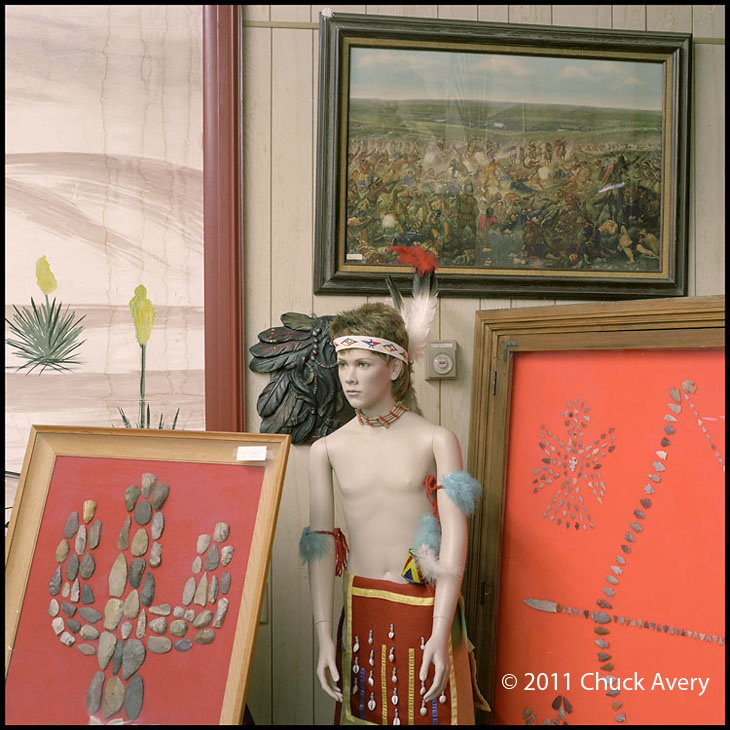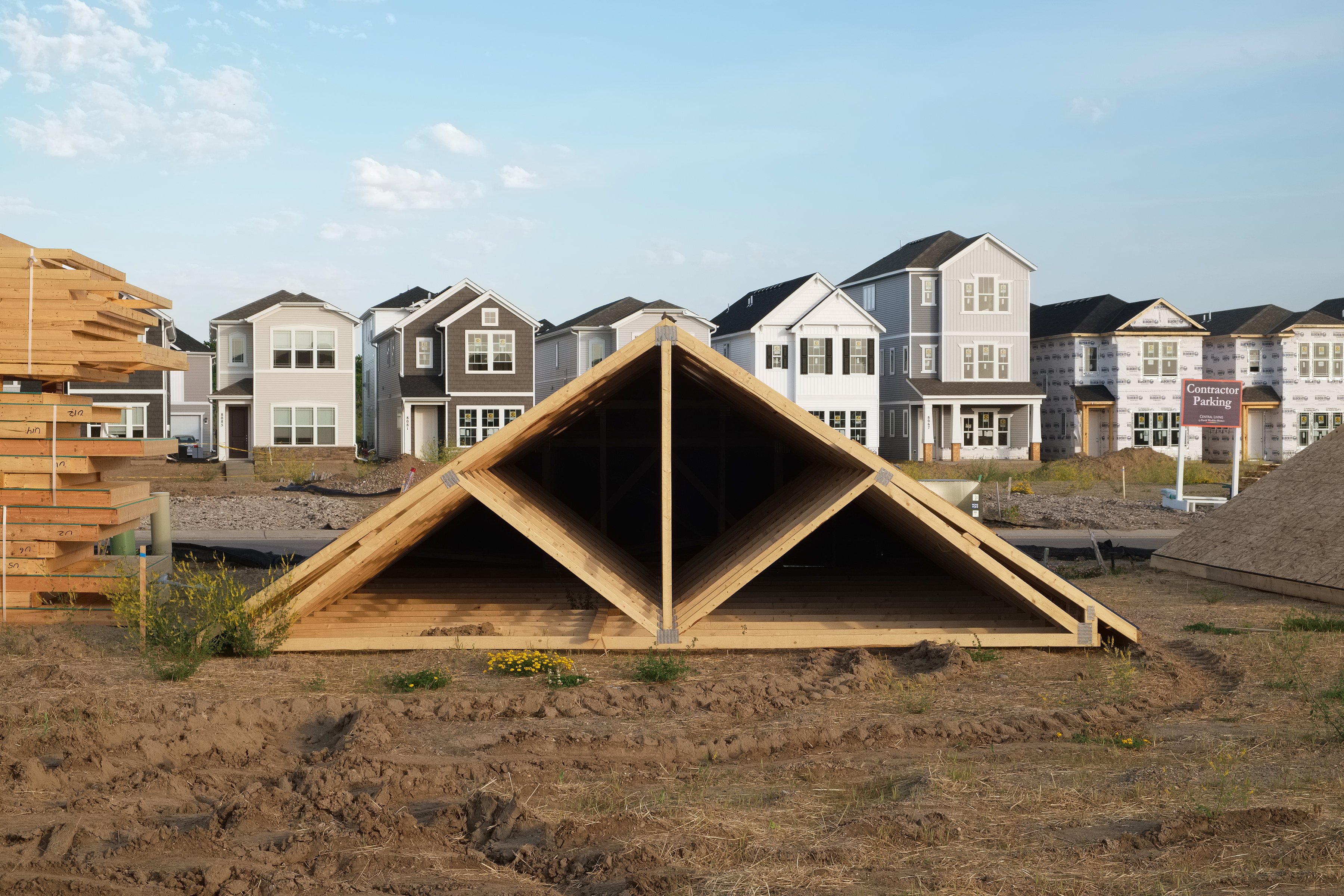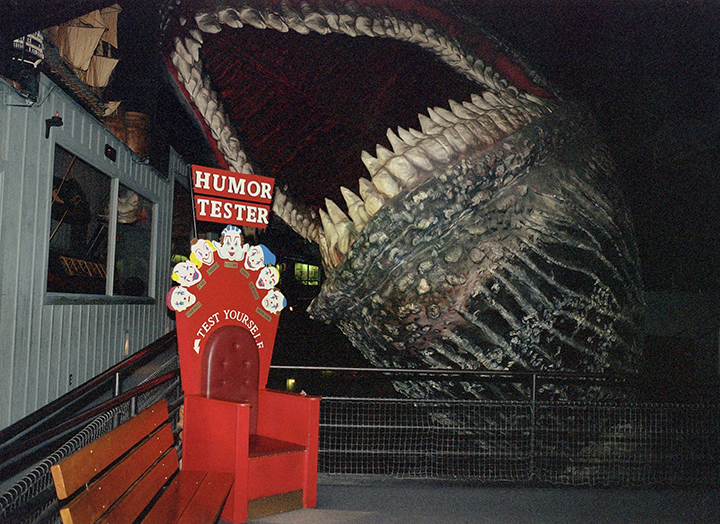Blood In The Streets
History is a subject for which many Americans don’t have the time. When they do, it is more likely to be concerned with historical suppression (i.e. critical race theory alarmism, anti-“wokeness”) than understanding. This backdrop is the driving force in my photography. I am interested in how these attitudes towards history are reflected in the public sphere of historical sites and other landscapes embedded with historical significance.

Site of 1927 Columbine Massacre
These images are part of an ongoing project that is focused on labor history in the United States. Labor history, does anybody know what that is? There is certainly no mention of it in contemporary education. Its exclusion from the history books is part of a pattern of negating any parts of American history that challenge the capitalist, free market system we live in. Look at what’s happening around the country; book censorship, banning the teaching of basic historical facts and so on. This isn’t new, and it carries over to how sites of historical significance are portrayed (or not) and interpreted.
I grew up in a family that went from squeezing by to one that was able to enjoy a middle class life of open possibilities after my dad joined a union at the local John Deere plant. Without that union card, our life would’ve been quite different. I told dad before he died that I was going to undertake a photo project that would highlight the struggle of those who went before him to provide for a life with dignity and means. It is to him and his predecessors that I dedicate this work.
For the past couple of years I have been traveling to various sites around the country where significant events in labor history have occurred. Some sites are noted with small markers while others remain completely anonymous. The recognition is almost always slight – in Pittsburgh you can find a small historical marker (if you look hard enough) in the middle of an intersection noting the killing of over forty workers on strike against the railroads. Most often the landscape can’t be bothered to deal with its past – a street in Milwaukee where unarmed strikers were shot dead by state militia gives no clue as to the events that transpired there in 1886. That is where my interest lies: what aspects of our past are worthy of commemoration and how does the contemporary landscape at these sites reflect those past histories? What does that say about us, about our society? There are stories to be found at these sites that delve deep into the ongoing struggle of capital versus labor that continue to define our society and influence how our lives play out today. History is a pattern, and my aim is to lay that pattern out to view.
Monuments and Markers
The many historical markers and monuments that we pass by day by day can be so ubiquitous as to become an almost invisible component of our landscapes. I have been photographing these points of interest across the upper Midwest for a while now with an eye on how these historical locations have been affected as the contemporary landscape has encroached upon them. I am also interested in what events and people have been deemed worthy of immortalizing at these sites and whose point of view tells the story. These are the questions and concerns that I would like to raise with this series of photographs. In these days of “fake” information I think we can all stop for a minute and reflect on how historical facts are disseminated, maybe starting with the public histories that have been staring us in the face as we pass by these markers and monuments.
Museum
 One of my earliest memories of a visit to a history museum was seeing the skeleton of Fox Indian Chief Peosta of the Mesquakie tribe on display at the Ham House Museum in my hometown of Dubuque, Iowa in the early 60’s. As an impressionable young boy, it both frightened and perplexed me. I must have learned something about being on the losing end of history that day. Of course, our cultural sensibilities have shifted considerably since then. The Ham House has stripped out the displays that I saw as a child and now presents its building as a restored landmark. As a result of this and similar experiences, I am driven to understand how institutions like this reflect America’s historical and cultural legacy.
One of my earliest memories of a visit to a history museum was seeing the skeleton of Fox Indian Chief Peosta of the Mesquakie tribe on display at the Ham House Museum in my hometown of Dubuque, Iowa in the early 60’s. As an impressionable young boy, it both frightened and perplexed me. I must have learned something about being on the losing end of history that day. Of course, our cultural sensibilities have shifted considerably since then. The Ham House has stripped out the displays that I saw as a child and now presents its building as a restored landmark. As a result of this and similar experiences, I am driven to understand how institutions like this reflect America’s historical and cultural legacy.
With that in mind, I traveled around the United States from 2008 until 2012 to visit and photograph other historical sites and museums. My travels took me to areas rich in history, including Boston, Richmond and Los Alamos. The scale of the places I visited ranged from local county museums run by volunteers, to large Smithsonian-affiliated institutions. The stories and themes I found there were those of power, mythology, conflict, preservation and interpretation.
Each place I visited added a unique voice to these themes and to the ongoing process of interpreting and evaluating our historical and cultural heritage. The end result is a sometimes contradictory, often self-serving and occasionally conciliatory mosaic of information that reflects popular notions of who we are as a people. I consider my photographs as an assemblage of voices from around the country – voices eager to have their take on the American story heard.
Landscape of Progress

Gravel Mining Area, June, 2005
Maple Grove, Minnesota, a northwestern suburb of Minneapolis, is the place you move to when it’s time to get out of the city and take up with a population that looks and thinks like you do. It’s a typical exurban island: 83% white, 83% with post high school degrees and 49% of house sales for homes over $300,000. It has grown from a sleepy village of 2,213 in 1960 to almost 72,000 in 2019. This population growth has spurred the opening up of needed land for the construction of housing and the retail development to support it. Since the late 1990’s the city has been investing in transforming a 100-year-old sand and gravel mine area of 2,100 acres into a destination commercial and residential area. This area is officially known as the Gravel Mining Area (GMA). As the mining operations are completed here, the land is being flattened and filled to accommodate the construction of the housing and commercial property that will sit on top of it. This construction in turn uses the sand and gravel being mined there to build the rising development. This process has created a contrast between the barren and elemental landscape being mined and readied for development and the already completed facades of the suburban shopping, dining and housing complexes that are slowly consuming it.

New Community Construction, June, 2020
I first chanced upon this barren and evolving landscape in 2002 when urban flight was at its height. I have been photographing it ever since. In the early years of exploration it was an empty sea of hills and sand and dirt – a raw, almost monochromatic landscape. Hiking through this area brought up emotional undercurrents of violence, desolation and control. As the years have gone by, the commercial and residential development has slowly transformed the land into a very typical suburban planners dream: flat land, wholesome architecture with green amenities of parks and lakes.
My photographs are a response to both the violence and control one feels while hiking through the undeveloped mining areas and to the aesthetic uniformity of the development that is continuing to be constructed there. There is also a strange beauty to be found in the machinery and man made elements that seem to stand in control of their immediate environments. But what does all of this progress mean? And who benefits from it? What does the future hold for this kind of Ozzie and Harriet utopian dream? These are some of the questions that a development of this magnitude raises. Maybe one could say that the American dream is made of sand and gravel.
Architecture of Amusement

House on the Rock, WI
What do theme parks, museums and other tourist attractions say about our culture? Over the years I’ve been asking that question and framing my answers in the form of photographs taken at venues like this across the Upper Midwest. My camera has been focused upon the point where the real world and a purely fabricated and interpreted one collide and cross over. Whether in a museum context with its studious cultural interpretations, or in an area of play with its popular cultural themes, the infrastructure created to support these alternate realities help to define and reinforce notions of who we are and where we come from.
From an architectural standpoint, the forms, structures, colors and textures used to create these spaces create an element of surrealism as normal form and function butt up against the irregular patterns and surprising (and sometimes downright absurd) shapes and structures. That juxtaposition of the fantastic and the banal underlies many of the images in this series, offering an entry point to discussion of social psychology, modernity and other scraps of our collective cultural subconscious. The architecture of amusement is real and fake at the same time in much the way modern life exists as a thin veneer over more practical and primal impulses.
With this project I answer the question of “what” – what does the architecture of amusement look like, what is its role in shaping our values, what words and messages and symbols does it use to draw us in. The why requires collaboration with a viewer – a mind and subconscious willing to look beyond the surface of everyday reality.
Sightseeing, 1976
I traveled the Upper Midwest in the fall of 1976 driving a rusty 65 Chevy and carrying a new Olympus camera and Vivitar flash unit along with rolls and rolls of Tri-X film. I was taking the semester away from the Kansas City Art Institute to complete an independent study project on tourism for my documentary photo class. It was my first shot at a thematic project. My destinations were museums and historical sites that I found as I traveled around this part of the country. I was interested in how American culture and history was preserved and presented to the casual sightseer at these places. I had no set agenda, other than shoot whatever I found interesting. The whole project was a bit of a gamble, as I had just purchased new camera gear and was using a new developer that I had started experimenting with a couple months earlier. Somehow I managed to pull it all together, but not without a share of technical disappointments due to the newly acquired technologies that I was using.
As I look back on it, it was an intense lesson in editing under deadline. Ninety-seven rolls of film shot in four separate road trips. All the processing and printing was done in my parents’ basement under makeshift conditions. But this is how one learns, right? In the end I put together two very nicely bound books of original silver prints, with a total of about seventy-five mounted images in them.
The reception from my professor and colleagues was positive and enthusiastic. I was encouraged, to say the least. I moved ahead after this with a great deal of confidence in what I was doing and how I was seeing through the viewfinder. It was the beginning of a lifelong exploration of American culture and history



